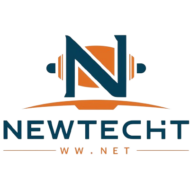In today’s fast-paced digital world,,luxury watches has become the cornerstone of modern business operations, facilitating everything from communication and collaboration to data analysis and customer engagement. However, alongside its many benefits, software also presents a unique set of challenges that can act as barriers to efficiency, productivity, and innovation. In this article, we delve into some of the common software barriers faced by organizations and explore strategies for overcoming them.
1. Legacy Systems
Legacy systems are one of the most prevalent software barriers faced by organizations. These outdated technologies often lack the flexibility, scalability, and integration capabilities required to keep pace with evolving business needs. Moreover, maintaining and updating legacy systems can be costly and time-consuming, draining valuable resources that could be allocated elsewhere.
Solution: Organizations can address this challenge by gradually modernizing their IT infrastructure through strategic investments in cloud-based solutions, microservices architecture, and application programming interfaces (APIs). By migrating to more agile and scalable platforms, businesses can unlock new opportunities for innovation and growth while reducing maintenance overhead.
2. Integration Complexity
In today’s interconnected digital ecosystem, organizations rely on a myriad of software applications and systems to streamline their operations. However, integrating these disparate tools and platforms can be a daunting task, leading to compatibility issues, data silos, and inefficiencies.
Solution: Adopting a holistic approach to integration is key to overcoming this barrier. By leveraging enterprise-grade integration platforms and middleware solutions, organizations can create seamless data flows between different systems, applications, and endpoints. Additionally, embracing standardized protocols and APIs can simplify the integration process and facilitate interoperability across diverse software environments.
3. Security Vulnerabilities
With cyber threats on the rise, ensuring the security of software systems and data assets has become a top priority for organizations across all industries. However, identifying and mitigating security vulnerabilities in complex software environments can be a formidable challenge, particularly in the face of evolving threats and attack vectors.
Solution: Implementing a comprehensive security strategy that encompasses proactive measures such as regular vulnerability assessments, penetration testing, and security audits is essential for safeguarding software assets against cyber threats. Additionally, adopting industry best practices such as encryption, multi-factor authentication, and role-based access control can help mitigate the risk of data breaches and unauthorized access.
4. User Resistance
Despite the benefits of adopting new software solutions, organizations often encounter resistance from end-users who are reluctant to embrace change or unfamiliar technologies. This user resistance can impede the successful implementation and adoption of software initiatives, hindering organizational productivity and innovation.
Solution: Effective change management strategies, including user training, education, and communication, are essential for overcoming user resistance to new software implementations. By involving end-users early in the decision-making process and addressing their concerns and feedback proactively, organizations can foster a culture of collaboration and empowerment, driving user adoption and engagement.
5. Lack of Scalability
As organizations grow and evolve, they require software solutions that can scale seamlessly to accommodate increasing workloads, users, and data volumes. However, many off-the-shelf software products lack the scalability and customization options needed to support the unique needs of growing businesses.
Solution: Investing in scalable and flexible software architectures, such as cloud-native applications and containerized microservices, can help organizations overcome the scalability barrier. By decoupling software components and leveraging scalable infrastructure-as-a-service (IaaS) and platform-as-a-service (PaaS) offerings, businesses can dynamically adapt to changing demands without sacrificing performance or reliability.
Conclusion
In an increasingly digital and interconnected world, software plays a central role in driving organizational success and competitiveness. However, the inherent complexities and challenges associated with software can act as barriers to innovation and growth. By addressing common software barriers through strategic investments in modernization, integration, security, user engagement, and scalability, organizations can unlock new opportunities for efficiency, agility, and resilience in the digital age.
